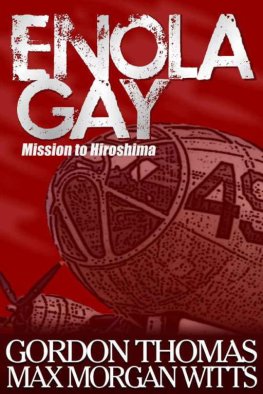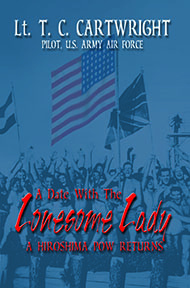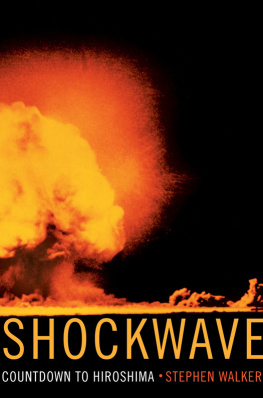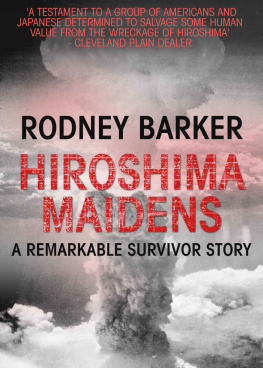Using for illumination the jagged shafts of lightning that intermittently broke through the pitch-blackness before dawn on this chilly July 16 morning, many of the 425 scientists and technicians gathered at the test site at Alamogordo, New Mexico, carefully rubbed sun lotion on their faces and hands. Though some of them were twenty miles away from its source, they feared the flash, when it came, might cause instant sunburn. But that could be the least harmful of its side effects. They all knew the radioactive fallout accompanying the flash could kill. If it reached them, no lotion or potion could prevent them from being contaminated.
And since nobody knew for certain what the outer limits of an uncontrolled nuclear chain reaction were, it was conceivable the destruction could spread beyond this semidesert area, which Groves and the scientists called Site S, and the natives called Jornada del Muerto, the tract of death. Even those scientists who, along with Groves, believed that the worlds first atomic explosion would not spread too far, shared a feeling of taking a huge leap into the unknown.
Nine miles from the base camp where Groves and Oppenheimer spent most of these early-morning hours, the plutonium bomb stood on a one-hundred-foot-high structural-steel scaffold. This point in the desert was code-named Ground Zero.
In mid-May, when the tower was still under construction, the air force had bombed the site, mistakenly believing the area to be part of a practice target range. Two buildings had been hit and fires started, but, miraculously, there had been no casualties. Then, a few days ago, during a rehearsal using a conventional bomb, a bolt of forked lightning had struck the tower and detonated the explosive. Again, no one had been hurt.
Now, with the test scheduled for 2:00 A.M., everyone hoped there would be no further mishaps. But the weather was getting worse. Lightning was accompanied by showers. Sporadic rain could be a serious danger, causing shorts in the electrical circuits leading to the bomb; heavy rain could prevent the test-firing altogether.
It was one more worry for Groves, already concerned that Tibbets was not at Alamogordo. And because of the weather, the B-29 Tibbets had ordered to be in the air at the time of the explosion was grounded. Now there was no way of knowing what effect the bomb would have on the airplane that would drop it over Japan.
Groves was further distressed by the way some of the scientists were trying to pressure Oppenheimer to postpone the test. The brilliant physicist was now wound up like the spring in a very expensive watch.
Groves decided to cast himself in the unusual role of the man who would dispel the tension. Clutching his scientific director firmly by the arm, the project chief marched him up and down around the base camp area, assuring him that the weather would improve. In Grovess opinion:
All the personnel had been brought up to such a peak of tension and excitement that a postponement would be bound to result in a letdown which would affect their efficiency. We simply could not adequately protect either our own people or the surrounding community or our security if a delayed firing did occur. [Another] point of concern was the effect of a test delay on our schedule of bombing Japan. Our first combat bomb was to be a U-235 one, and while a successful test of the plutonium bomb without the complications of an air drop would not be a guarantee, it would be most reassuring. Moreover, it would give credence to our assurance to the President as to the probable effectiveness. A misfire might well have weighed heavily on the argument by some, particularly Admiral Leahy, that we were too optimistic and that we should wait for a successful test. After all, this was the first time in history since the Trojan Horse that a new weapon was to be used without prior testing.
The test was delayed while the harassed weathermen tried to predict conditions in the coming hours.
Finally, the firing was scheduled for approximately 5:30 A.M., Mountain War Time.
At 5:25 A.M., the observers who were out in the open took up their final positions, lying flat on the earth, faces down, feet toward the blast.
At 5:29 sharp, the last in a series of automatic timing devices took over. There were forty-five seconds to go.
Oppenheimer and his senior staff waited tensely in a concrete bunker. Groves was in a slit trench a short distance away from the scientific director, because I wanted us to be separated in case of trouble.
5:29:35.
From another dugout, a man spoke into a microphone linked to the four lookout posts around the base camp. Zero minus ten seconds.
A green flare flashed from the ground and burned against the low cloud base, briefly and eerily lighting up the darkness.
5:29:40.
Zero minus five seconds.
A second flare cascaded.
5:29:43.
Silence and darkness reigned once more over the desert.
5:29:44.
At 5:29:45, everything happened at once. But it was too fast for the watchers to distinguish: no human eye can separate millionths of a second; no human brain can record such a fraction of time. No one, therefore, saw the actual first flash of cosmic fire. What they saw was its dazzling reflection on surrounding hills. It was, in the words of the observer from The New York Times:
a light not of this world, the light of many suns in one. It was a sunrise such as the world had never seen, a great green super-sun climbing in a fraction of a second to a height of more than 8,000 feet, rising ever higher until it touched the clouds, lighting up earth and sky all around with a dazzling luminosity. Up it went, a great ball of fire about a mile in diameter, changing colors as it kept shooting upward, from deep purple to orange, expanding, growing bigger, rising as it was expanding, an elemental force freed from its bonds after being chained for billions of years. For a fleeting instant the color was unearthly green, such as one only sees in the corona of the sun during a total eclipse. It was as though the earth had opened and the skies had split. One felt as though he had been privileged to witness the birth of the Worldto be present at the moment of Creation when the Lord said: Let There Be Light.
Many of the observers were transfixed, rooted to the ground by a mixture of fear and awe at the immensity of the spectacle. Oppenheimer remembered a line from the Bhagavad Gita, the sacred epic of the Hindus. I am become death, the destroyer of worlds.
The sinister cloud continued to billow upward, its internal pressures finding relief in one mushroom after another, finally disappearing into the dawning sky at well over forty thousand feet. At Ground Zero, the temperature at that moment of explosion had been 100 million degrees Fahrenheit, three times hotter than the interior of the sun and ten thousand times the heat on its surface.
Within a mile radius of Ground Zero, all life, plant and animal, had vanished; around what had been the base of the tower, the sand had been hammered into the desert to form a white-hot saucer five hundred yards in diameter. There had never before been sand like it on earth. When it cooled, it turned into a jade-green, glazed substance unknown to scientists.
The steel scaffold, impervious to any heat known in the preatomic age, had been transformed into gas and dispersed.
Groves was among the first to regain his composure. He turned to his deputy, Brigadier General Thomas Farrell, and uttered a prediction. The wars over. One or two of these things and Japan will be finished.
Furman and Nolan, the two young Manhattan Project specialists who were escorting some of the vital bomb components to Tinian, watched the final sailing preparations of the Indianapolis.
Knowing as little about ships as they did about guns, Furman and Nolan were impressed by the
Next page







